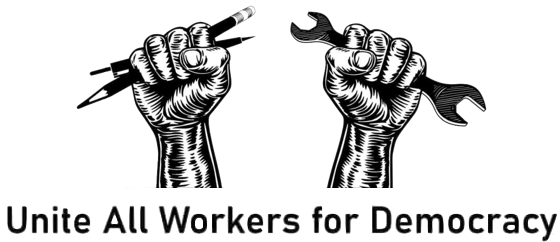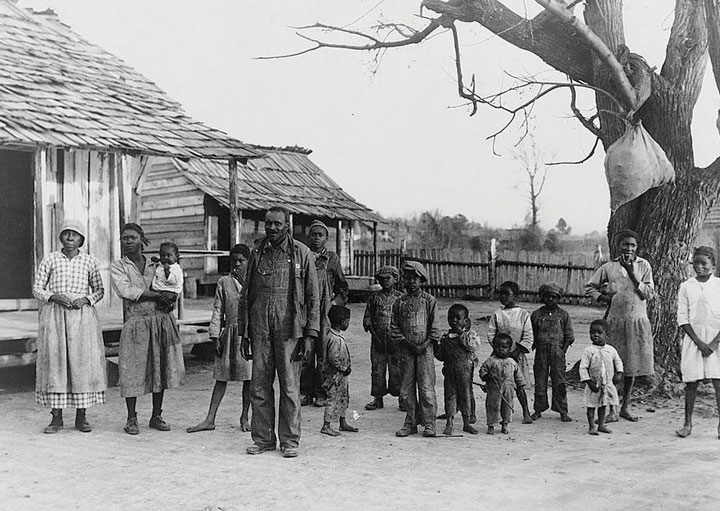Follow Erik Loomis on Twitter
This Day in Labor History: July 16, 1931. A white mob murdered the black sharecropper organizer Ralph Gray in Tallapoosa County, Alabama. Let’s talk about Black radical rural organizing and the sickening white violence that would fight it!
Ralph Gray was born into a family with a long history of fighting for black rights. His grandfather had served in the Alabama state legislature during Reconstruction.
Gray was born in 1873 and had fought for his own personal survival through the terrible oppression that defined his life. He moved to Birmingham for a while before returning to Tallapoosa in 1895 to get married and become a tenant farmer.
In 1919, he set out again for a better life, but ended up sharecropping in Oklahoma and New Mexico over the next decade, unable to get ahead. He returned home in 1929. He managed to scrape together a small amount of money, bought a little land and even an automobile.
He took out a federal loan in 1931 to rent a farm from a local white farmer. The check was supposed to be split between the two men. The white landowner stole Gray’s half. Gray took the case to the Agricultural Extension Service.
The landowner was outraged and attempted to beat Gray. But Gray fought back and did the beating himself.
By this time, the Depression was decimating southern farmers and the worst of it was among sharecroppers. Gray began reading the Communist Party’s southern paper Southern Worker. He declared himself a communist and wanted to start a sharecroppers’ union.
The Communist Party, probably the most important majority white organization in the United States fighting for racial equality, even if it had its own form of racial blinders, was attempting to organize southern workers no matter the race.
Gray and his brother wrote to the CP, requesting an organizer come help them. That organizer was Mack Coad, an illiterate Birmingham steelworker and communist. He came at a good time.
Tallapoosa County white landowners, having all the crops planted by mid-May, decided to withhold credit and food from black farmworkers to force them to work in a new sawmill.
The outrage over this led to significant interest in the Communists from these black workers, as was happening in many places in Alabama during the early 1930s. Gray and Coad started a local branch of the Croppers’ and Farm Workers Union (CFWU), which soon had 800 members.
The sheer idea of black organizing outraged the local white elite and they acted with the brutality all too typical of the South.
On July 15, the CFWU held a meeting to discuss the Scottsboro Boys’ case, the famous trial against nine African-Americans for raping two white women on a train, a charge for which they were completely innocent and which became a major cause on the left in the 30s.
The Scottboro Boys had been sentenced to death five days earlier and the movement to support them was beginning. About 80 people showed up to hear Coad discuss the case.
Sheriff Kyle Young created a posse to violently eliminate this growing threat to the white political, economic, and racial power structure in Tallapoosa County. They went to the meeting house and brutally beat many of the people there, scattering everyone else.
They then went to the home of Tommy Gray, brother of Ralph. There they beat him and his wife, breaking her skull. Ralph Gray ran in armed and dispersed the posse.
Showing incredible bravery, the next evening about 150 people gathered for another meeting with Coad. Armed sentries guarded the building. Ralph Gray was among those standing guard.
When Young and his deputies showed up to the meeting, they confronted Gray. Shots rang out. Gray had shot Young with buckshot in the stomach while Gray laid on the ground with wounds to his legs.
Coad and others carried Gray back to his home and barricaded themselves inside. A new posse developed led by police chief J.M. Wilson. The exchange of fire lasted for some time and gave everyone but Gray the chance to escape. He evidently told his comrades to leave him.
When the posse walked in to his house, someone put a gun down his throat and fired. They then burned his house and dumped his body on the steps of the courthouse in Dadeville. Armed whites then used his body for target practice.
In the repressive aftermath, between 34 and 58 African-American men were arrested over the next few days. Most were charged with conspiracy to murder and carrying a concealed weapon, but 5 union leaders were charged with assault to murder.
White mobs roamed the countryside murdering blacks and burning their homes. Dozens were killed or wounded.
Coad escaped to Atlanta. After a local black minister accused her of hiding ammunition, the police broke the back of Estelle Milner. These local mobs were whipped up by the white power elite in Alabama.
The Birmingham Age-Herald ran a story titled “Negro Reds Reported Advancing” with claims that eight carloads of black communists were heading for Tallapoosa to help the sharecroppers.
Of course, these stories were accompanied with fears of black men raping white women and all the usual race-baiting. None of this was true but whites created a mob to stop traffic entering the county.
Local black leaders and white liberals blamed white communists for all of the violence, saying that sharecroppers were docile and would never start such a thing.
Moreover, they said Ralph Gray was contaminated with foreign ideas from his time in Oklahoma and New Mexico, as if those states were somehow less politically nightmarish than Alabama.
Walter White and the NAACP went so far to accuse the communists of using the NAACP’s name to organize the sharecroppers after white Alabama blamed that organization as well.
The Communist Party planned to go all-in to defend their members in prison. Alabama elites, already feeling the pressure over the Scottsboro Boys, wanted the charges dropped and after several delays, they were released and their hearings postponed indefinitely.
None of this had led to any concrete gains for the sharecroppers but it also did not stop the organizing.
On August 6, 55 communist sharecroppers, including Ralph Gray’s brother Tommy, met in Tallapoosa and reorganized. The Communist Party would continue seeing success in organizing rural black workers in Alabama through the rest of the decade.

